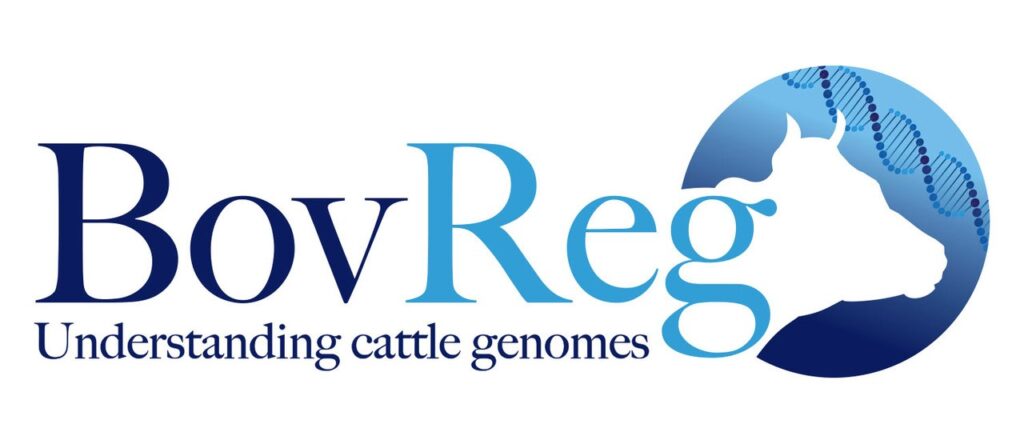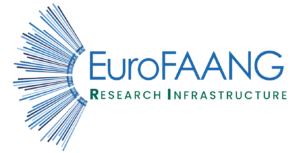Work Package 5
Development of a framework for sharing and expanding capabilities in genome editing
Genome editing is an important tool to build basic research and fundamental knowledge, and is currently at the pre-competitive stage. The aim of WP5 is to develop a framework for sharing and expanding capabilities in genome editing as a route to application of FAANG data for understanding the genotype to phenotype link in farmed animals. It has three main objectives:
- Provide a route to application of FAANG data in vitro by creating a framework for access to highthroughput phenotyping (HTP) platforms for the validation of candidate causal variants.
- Devise a framework to facilitate access to genome editing technology in vivo in the form of: i) animal facilities equipped to handle/raise and conserve genome edited animal lines across generations and ii) in silico modelling studies to predict the effect of introducing an edit into a breeding population.
- Creation of a European think-tank on genome editing in farm animals, connecting national ethics committees, projects and research infrastructures.
Task 5.1 will provide a framework for how stakeholders could test a causal variant or set of functional variants using high-throughput phenotyping (HTP) platforms with cellular models (developed in WP4). The use of genome editing in in vitro systems for functional validation of causal variants provides a direct route to application for the genome and phenome data that will be accessible through the EuroFAANG infrastructure (WP3). To be successful this strategy requires coordination with the biorepositories (cell lines and organoids) in WP4. Transnational access (WP2) would be required to use high throughput phenotyping platforms, such as the Genome Foundry at UEDIN, to test functional edits at scale. These platforms provide advances beyond state of the art, for example, using robotics to test hundreds of thousands of causal variants in cell lines using CRISPR genomic screens.
Task 5.2 will facilitate access to genome editing technology in vivo by connecting animal facilities currently generating genome edited animals, such as the Large Animal Research and Imaging Facility (LARIF), National Avian Research Facility (NARF) at UEDIN and others across Europe. In addition, task 5.2 will connect facilities performing genome editing in vitro using organoids and cell lines and consolidate the infrastructure for maintaining these (with WP4). Task 5.2 will also contribute to conserving and maintaining genetic diversity through establishing a framework for access to novel technologies that connect in vitro and in vivo genome editing. One example of this, developed at UEDIN, is the introduction of cryopreserved primordial germ cells from donor chickens, either from local breeds or breeding lines, into a genome edited host chicken by Sire Dam Surrogate (SDS) mating technology. Another example is the elaboration and distribution of edited stem cells or edited embryos, for researchers willing to test the function of a gene in a particular context (linking to the HTP phenotyping of causative variants with cellular models in Task 5.1). This service would represent a breakthrough for the generation of fundamental G2P knowledge and have considerable relevance for industry. In this proposal we will determine how the EuroFAANG infrastructure could provide TNA to cryopreserved edited animal lines, facilities to generate the lines and the expertise required. In addition to providing access to genome editing technology itself the EuroFAANG infrastructure will also provide TNA to modelling capabilities to test the effects of making the edit in silico. Partner institutions in the EuroFAANG infrastructure have expertise in modelling the effects of introducing edited animals into breeding populations. These capabilities would allow stakeholders to model the effects of an edit in a breeding programme using prediction equations prior to making the edit, making optimal use of the technology to maximise animal health, welfare and productivity. As part of task 5.2 a web portal will be created to connect institutes and other stakeholders with capabilities and expertise in genome editing in farmed animals across Europe.
In task 5.3 a European think-tank on genome editing in farm animals will be created, including experts in genome editing, ethics and animal breeding from across Europe. The aim of the think-tank is to connect national ethics committees, projects and research infrastructures for G2P research using genome editing as a route to application. The outputs of the think-tank will be fed into the design of the EuroFAANG infrastructure to ensure TNA to genome editing is both ethical and fair, and to identify the main barriers to adoption of the technology. The main outcome of task 5.3 will be consolidated societal and scientific opinion and policy on genome editing for linking G2P in farmed animals. The think-tank will also ensure that TNA to genome editing technologies in the EuroFAANG infrastructure will have an emphasis on improving animal health and welfare and be linked to Code-EFABAR13 the commitment to responsible farmed animal breeding and The Animal Task Force. To engage with stakeholders EFFAB will run an annual workshop, when the think-tank will meet virtually and explore the use of genome editing, barriers to implementation, and importance of TNA to capabilities and facilities for application of the technology.

Keep in touch!
EuroFAANG projects

GEroNIMO
Go to website
BovReg
Go to website
Rumigen
Go to website
GENE-SWitCH
Go to website
HoloRuminant
Go to website



